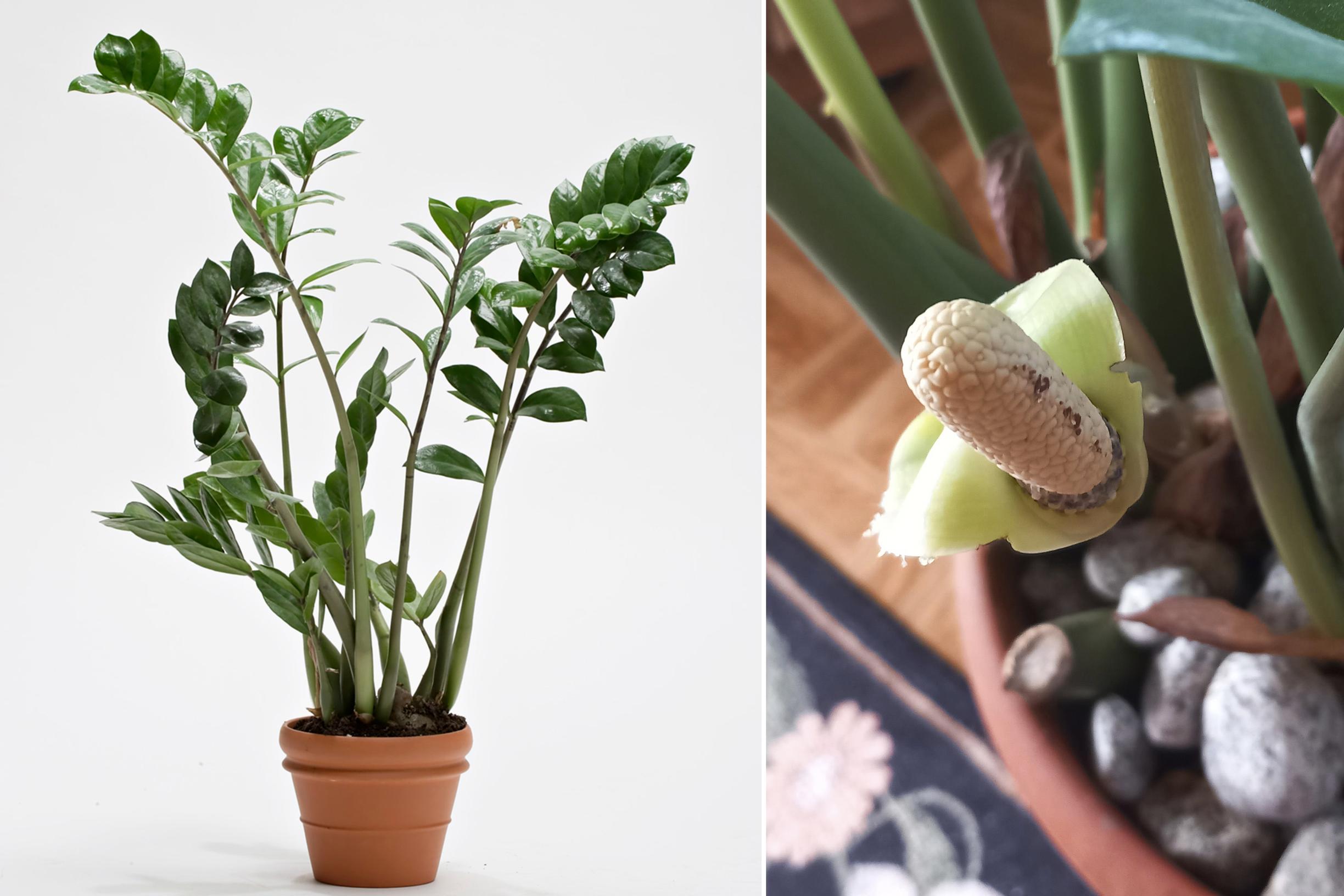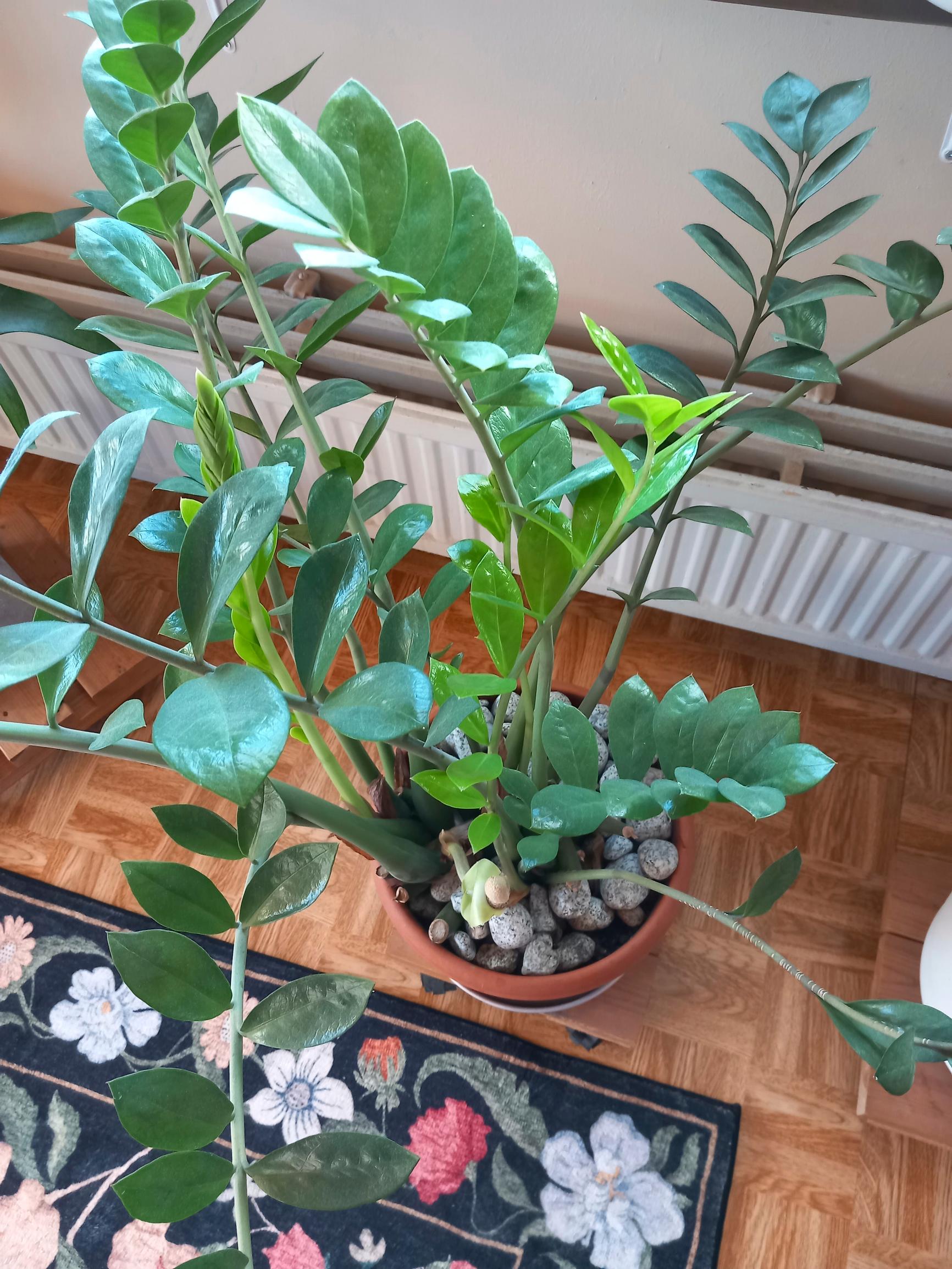
A “finger” sprouted from Kalevi’s Zanzibar gem pot—an expert weighs in on how rare the bloom is
Finnish Kalevi was surprised when a peculiar, index-finger-shaped leaf appeared at the base of his Zanzibar gem but never opened. Then he realized his 20-year-old plant was flowering for the first time. We asked botanist Visa Lipponen how that could be possible.
Visa says: Zanzibar gem (Zamioculcas zamiifolia) is one of the most common houseplants, but how many people have actually seen it bloom? It’s not very common, but it’s not unheard of either.
I have three different Zanzibar gem plants. I haven’t documented every single bloom, but here’s what I know: the wild specimen I collected in Tanzania in 1999 has bloomed at least once, the plant I bought at a grocery store in 2000 has bloomed several times, and the smaller variety ‘Zamicro’ that I’ve had for eight years has never bloomed.
“How many people have seen a Zanzibar gem in bloom?”
So the grocery store plant has bloomed most often, but not every year or even in consecutive years. My Zanzibar gems have always grown on a bright porch, more or less side by side, with the same care. Their blooms have never happened on two different plants in the same year.
Zanzibar gem belongs to the Araceae. Many species in this family are known for rarely blooming, whether in their natural habitats or in greenhouses. I can’t say for certain, but I assume Zanzibar gem behaves similarly—flowering for no obvious reason when the mood strikes.

“The inflorescence always develops at the base of the newest leaf.”
A Zanzibar gem has fleshy leaves that grow directly from a rhizome. They’re segmented, much like rowan or palm leaves. Because of their thickness, they’re often mistakenly called “branches.” The inflorescence always forms at the base of the newest leaf. From my observations in Finland, flowering usually happens between March and May.
When it’s in bud, the inflorescence stands upright, but once the flowers open, the stalk curves sideways in an S shape. First, the tiny female flowers open, appearing as small green bumps in the purple base of the inflorescence. After they wither, the male flowers in the white tip open, mainly noticeable by the pollen they release. The bloom lasts for about two to three weeks, after which the inflorescence bends downward and can remain that way for several months.

You won’t get seeds from the plant, as the female and male flowers appear at different times, preventing self-pollination. If you’d like seeds, you need two plants that are in bloom at the same time—one with female flowers and the other with male flowers—so you can transfer the pollen yourself.


